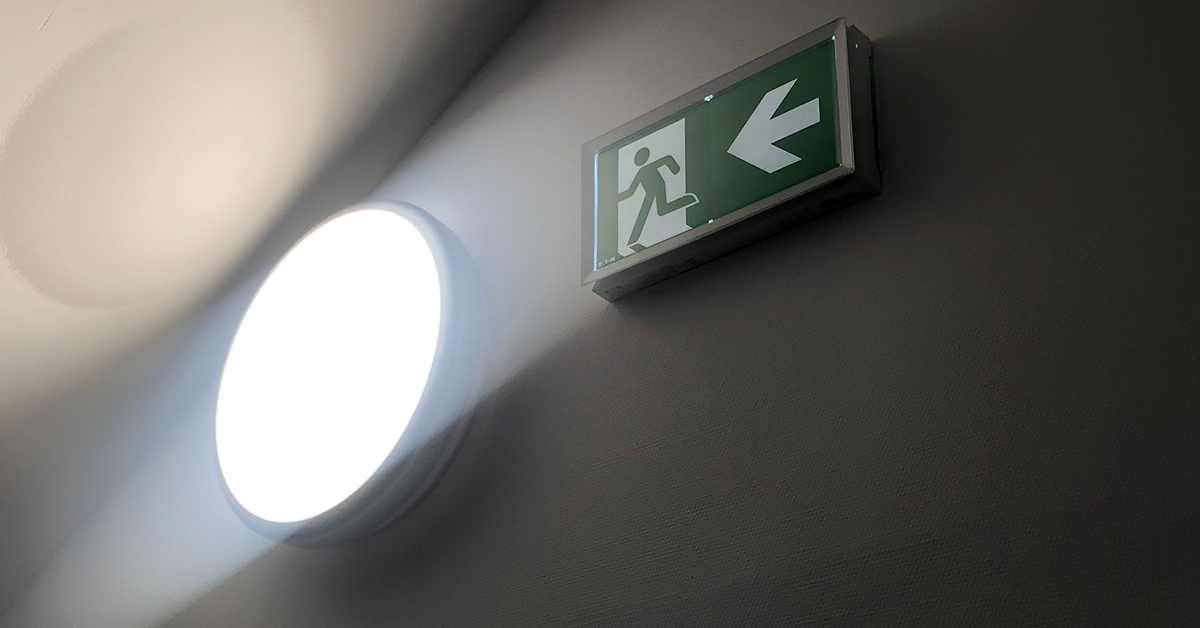
What Are the Main Areas of Passive Fire Protection?
February 9, 2023
Most people are relatively familiar with active fire protection, which includes systems that help to detect and stop fires. Typically, active fire protection systems include elements such as:
- Fire alarm systems that alert occupants to a fire so they can evacuate the premises
- Fire-detection systems that alert occupants to the presence of a fire, such as smoke, flame, or heat detectors
- Fire sprinklers that use automatically activated sprinkler systems to discharge water where there is fire
- Fire suppression systems that use gas, foam, or other chemicals to put out fires where water is not effective
However, it is critical to have both active and passive fire protection to help prevent loss of life or damage to property in the event of a fire. Passive fire protection is often unseen and unnoticed, but when properly installed and maintained, it helps to keep fires contained, prevents the collapse of structures, and allows for people to exit the premises more safely, saving not only lives but also the structure itself.
The Four Critical Areas of Passive Fire Protection
You need both active and passive fire systems to keep your building fully protected. The main goals of a passive fire system are to contain the spread of flames, keep the fire in areas where it is easier to manage, maintain the integrity of structural elements that are load-bearing, and slow the progression of flames, gases, or smoke through cracks and openings. There are four major areas where passive fire protection is required to prevent fires before they start.
Structural Fire Protection
Structural fire protection is critical, as it protects the elements of your building, such as steel and joint systems, from fire damage by using fireproof materials such as cement products, mineral wool wraps, mineral wool insulation, fireproof cladding or gypsum-based plasters, and thin-film intumescents. Or, if you are at the building stage, you can consider building your structure out of concrete. All these materials will help maintain the structural integrity of your building if it is exposed to fire.
Compartmentation
Compartmentation refers to containing a fire within a specific area to control and limit damages. Typically, this is accomplished by using barriers such as fire partitions, smoke barriers, and firewalls. Fire barriers such as walls, floors, and ceilings that are fire-resistance rated and extend into concealed spaces allow for full protection. They are instrumental in maintaining evacuation routes free of fire and smoke. In addition, fire-safe walls that are built with structural stabilization ensure that, even if part of the building collapses on either side of the wall, the wall will remain intact. Examples of walls with a fire-resistance rating include party walls, smoke barriers, and fire walls and fire partitions.
Opening Protection
Any openings in a fire barrier will be fitted with a fire door and/or window, depending on the application, to keep both smoke and fire contained. Even fire and smoke dampers that are used in duct systems are considered passive fire protection, as they help complete the barrier where the ducts converge with other fire-rated assemblies. You can even use smoke-rated curtains to helps promote a robust smoke-management system for safer and more effective evacuation.
Firestopping Materials
In the event that a fire penetrates a fire barrier, firestopping materials are applied to limit the spread of the fire. If penetration areas are not sealed properly with the appropriate firestopping materials, the fire may spread beyond the compartment in which it originated. Some firestopping materials can include fire-retardant cable coatings, joint systems, and floor and exterior curtainwall perimeter fire barriers.
Turn to SafeCare for Reliable Fire Protection
Whether you are designing a new structure, remodeling an existing building, or looking for ways to increase your property’s fire-safety profile, adding both active and passive fire protection systems is critical.
At SafeCare, we have access to cutting-edge fire protection technologies and tools. And, as a full-service provider, we can not only install your fire protection system, but maintain it over the years to ensure it stays in proper working order. Our team of fire-safety experts can assess your building’s current fire safety to find areas of vulnerabilities or weakness and design a custom plan for creating a safer space.
In addition, we have inspectors on hand to inspect your fire safety systems such as alarms, sprinklers, extinguishers, and fire hydrants to give you the greatest level of safety—and peace of mind. Contact us today to learn more about our fire protection and prevention technologies or to schedule an assessment or inspection of your property today.